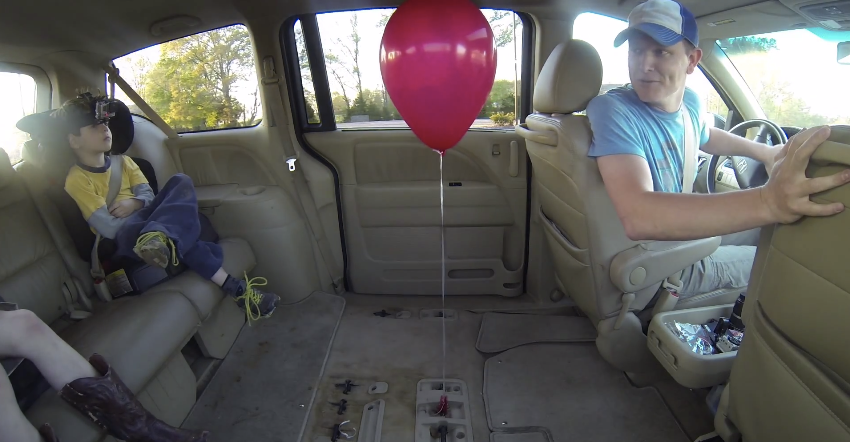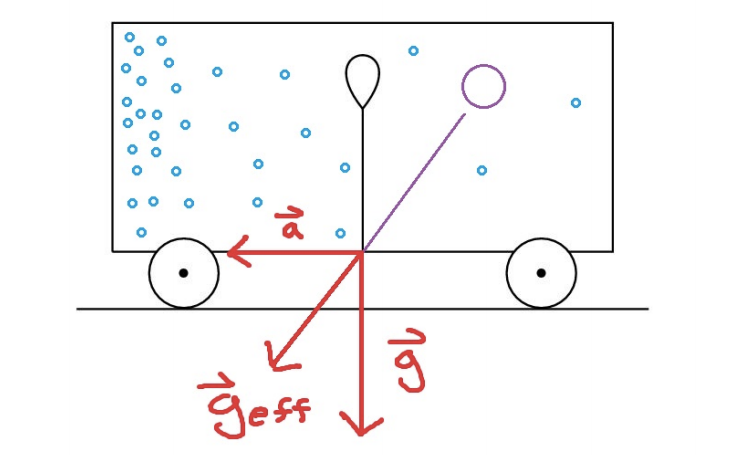If you don't already know why a helium balloon tethered to the floor of a minivan has the power to make your jaw drop, you're going to want to see this. Seriously – set aside five minutes of your time, have a seat and watch. You won't regret it.
In this, the latest installment of the outstanding YouTube science series Smarter Every Day, our host Destin explores the baffling behavior of a helium balloon in an accelerating vehicle. What's so baffling about it? See for yourself:
What's remarkable about this experiment is that the balloon's behavior seems completely counterintuitive to what we've been conditioned – with every turn, brake, and press of the gas pedal – to expect of objects in accelerating vehicles. What's beautiful about it is that this behavior isn't counterintuitive at all.
It's not immediately obvious, but this is actually a fluid dynamics problem, as Destin alludes to with the mason jar full of water. Air is less dense than water, and is readily displaced by the water's motion in the mason jar. Similarly, helium is less dense than air. When the car accelerates, the air molecules in the car resist the change in motion (thanks inertia!) and collect in the back of the vehicle's interior. The air displaces the helium-filled balloon and causes it to move forward, away from the rear of the car where the air molecules have collected.
Still confused? There's an even easier, conceptual way to wrap your head around this problem. This particular explanation comes via Keith Fratus, a physics instructor at UC Berkeley:
Image Credit: Keith Fratus
Is there an easier way to see this [if we don't know much about fluid mechanics]? Yes! Remember that so long as I have a closed system which is accelerating at a constant rate, I can always pretend that it is actually not accelerating, but rather sitting still in a uniform gravitational field, via the equivalence principle...we can either think of [the air molecules in the car] having the back of the car rush over to meet them, or them being pulled down towards the back of the car by some gravitational force.
This means that I can pretend that the car is actually subject to not only the usual force of gravity, but also a force pointing backwards, equal and opposite to the acceleration. When I add these two gravitational fields together, the net result points down and to the left. This is the new direction of "gravity" in my system. Since I know that balloons always float "up" in a gravitational field, the balloon will point opposite to this direction, and thus it will tilt forward in the car! Thus, I was able to use the equivalence principle to immediately see the answer to what could have been a complicated fluid dynamics problem.


No comments :
Post a Comment